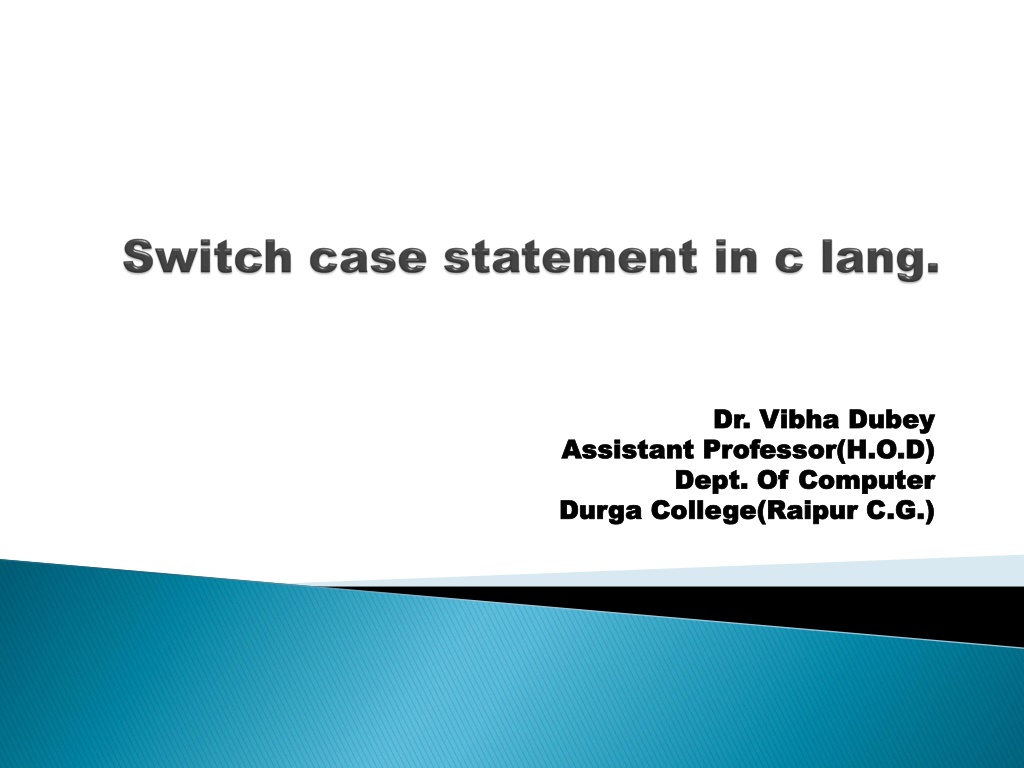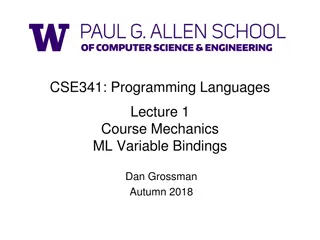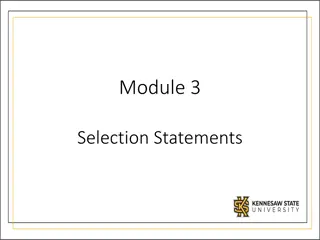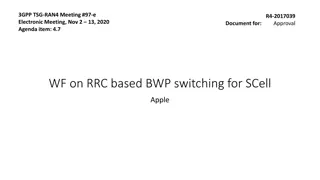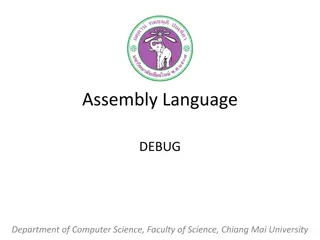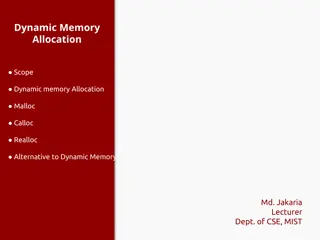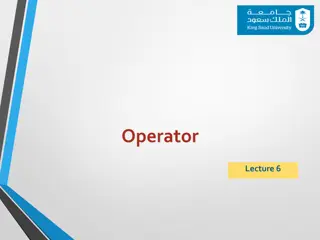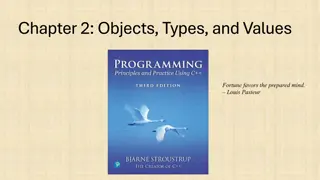Understanding the Switch-Case Statement in C Programming
Switch-case statement in C programming allows for efficient handling of multiple cases based on a user-provided value. This statement compares the expression with various cases, executes the associated block of statements for the matched case, and includes a default case if no matches are found. Remember to use break to end each case and prevent fall-through execution.
Download Presentation

Please find below an Image/Link to download the presentation.
The content on the website is provided AS IS for your information and personal use only. It may not be sold, licensed, or shared on other websites without obtaining consent from the author. Download presentation by click this link. If you encounter any issues during the download, it is possible that the publisher has removed the file from their server.
E N D
Presentation Transcript
Dr. Dr. Vibha Vibha Dubey Dubey Assistant Professor(H.O.D) Assistant Professor(H.O.D) Dept. Of Computer Dept. Of Computer Durga Durga College(Raipur C.G.) College(Raipur C.G.)
Switch statement compares it with multiple cases. Once the case match is found, a block of statements associated with that particular case is executed. Each case in a block of a switch has a different name/number which is referred to as an identifier. The value provided by the user is compared with all the cases inside the switch block until the match is found. If a case match is NOT found, then the default statement is executed, and the control goes out of the switch block. Switch statement tests the value of a variable and
Syntax A general syntax of how switch-case is implemented in a 'C' program is as follows: switch( expression ) { case value-1: Block-1; Break; case value-2: Block-2; Break; case value-n: Block-n; Break; default: Block-1; Break; } Statement-x; Syntax
The expression can be integer expression or a character expression. Value-1, 2, n are case labels which are used to identify each case individually. Remember that case labels should not be same as it may create a problem while executing a program. Suppose we have two cases with the same label as '1'. Then while executing the program, the case that appears first will be executed even though you want the program to execute a second case. This creates problems in the program and does not provide the desired output. Case labels always end with a colon ( : ). Each of these cases is associated with a block. A block is nothing but multiple statements which are grouped for a particular case. Whenever the switch is executed, the value of test-expression is compared with all the cases which we have defined inside the switch. Suppose the test expression contains value 4. This value is compared with all the cases until case whose label four is found in the program. As soon as a case is found the block of statements associated with that particular case is executed and control goes out of the switch.
The break keyword in each case indicates the end of a particular case. If we do not put the break in each case then even though the specific case is executed, the switch will continue to execute all the cases until the end is reached. This should not happen; hence we always have to put break keyword in each case. Break will terminate the case once it is executed and the control will fall out of the switch. The default case is an optional one. Whenever the value of test-expression is not matched with any of the cases inside the switch, then the default will be executed. Otherwise, it is not necessary to write default in the switch. Once the switch is executed the control will go to the statement-x, and the execution of a program will continue.
#include <stdio.h> int main() { int num = 8; switch (num) { case 7: printf("Value is 7"); break; case 8: printf("Value is 8"); break; case 9: printf("Value is 9"); break; default: printf("Out of range"); break; } return 0; }
An expression must always execute to a result. Case labels must be constants and unique. Case labels must end with a colon ( : ). A break keyword must be present in each case. There can be only one default label. We can nest multiple switch statements.
